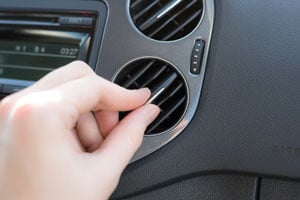Why HDPE has changed the automotive industry


The automotive industry, one of the most competitive and innovative ones, has enjoyed for years the benefits that plastics offer when manufacturing vehicles. Nevertheless, is in the last decade when there has been an authentic revolution in the use of these materials. In particular, high-density polyethylene (HDPE), also used in sectors, such as aeronautical, nautical and rail ones, is one of the plastics with more uses in the automotive industry. Other materials used are ABS or polypropylene.
Today we know that, combined with other materials, plastics can decrease the weight of many parts of cars up to 70 %. In addition, they decrease emissions and the fuel consumption. It is a waterproof material resistant to climatic conditions.
Uses of HDPE in the automotive sector
On the one hand, the advantages of HDPE are used for manufacturing basic componentes in vehicles. With this thermoplastic materials and together with polypropylene, so many products are manufactured: batteries, different kinds of tanks (oil, brake fluid, washer fluid, etc.), interior linings, bumpers, seats, storage inner compartments, trims, etc.
On the other hand, other accessory components, such as inner and outer protective covers and fixing elements benefit from its resistance and flexibility.
Advantages over metal and other materials
- Lower weight entails a lower consumption. HDPE weighs less than the materials traditionally used in the automotive industry. It has contributed directly to reduce fuel consumption. In a context in which the fuel consumption is one of the aspects that consumers took greater account of, this represents an important competitive advantage. Nowadays, we can buy a car with a better performance than ten years ago, including a higher power and, however, consuming less fuel. This is very much due to plastics such as HDPE.
- Lower manufacturing cost. HDPE manufacturing is much simpler and faster than other types of material.
- The repair of vehicles’ parts manufactured with HDPE is easy and cost-effective. Manual welding, available for everyone with a minimum training and a simple equipment, is useful to repair marks and breaks.
- Long shelf life. In contrast to what happens with other materials, HDPE has a long shelf life. This makes that, over the years, car materials made with this thermoplastic material become less deteriorated. As opposed to other materials or plastics formerly used, which used to lose their properties faster and showed symptoms of wear and tear, HDPE is preserved better.
- Lower environmental impact. As a consequence of a higher HDPE’s lightness, in contrast to steel, wood, aluminium and others, the automotive industry has achieved to reduce the pollutant emissions of their vehicles, thus adjusting to the EC requirements. Moreover, HDPE, used in vehicles, may come from recycled plastic, treated in special plants.
- From an aesthetic point of view, HDPE may adopt attractive shapes and have different colours and tonalities. This makes it very versatile for different kinds of vehicles: sports cars, family cars, transport vehicles for commercial goods, etc.